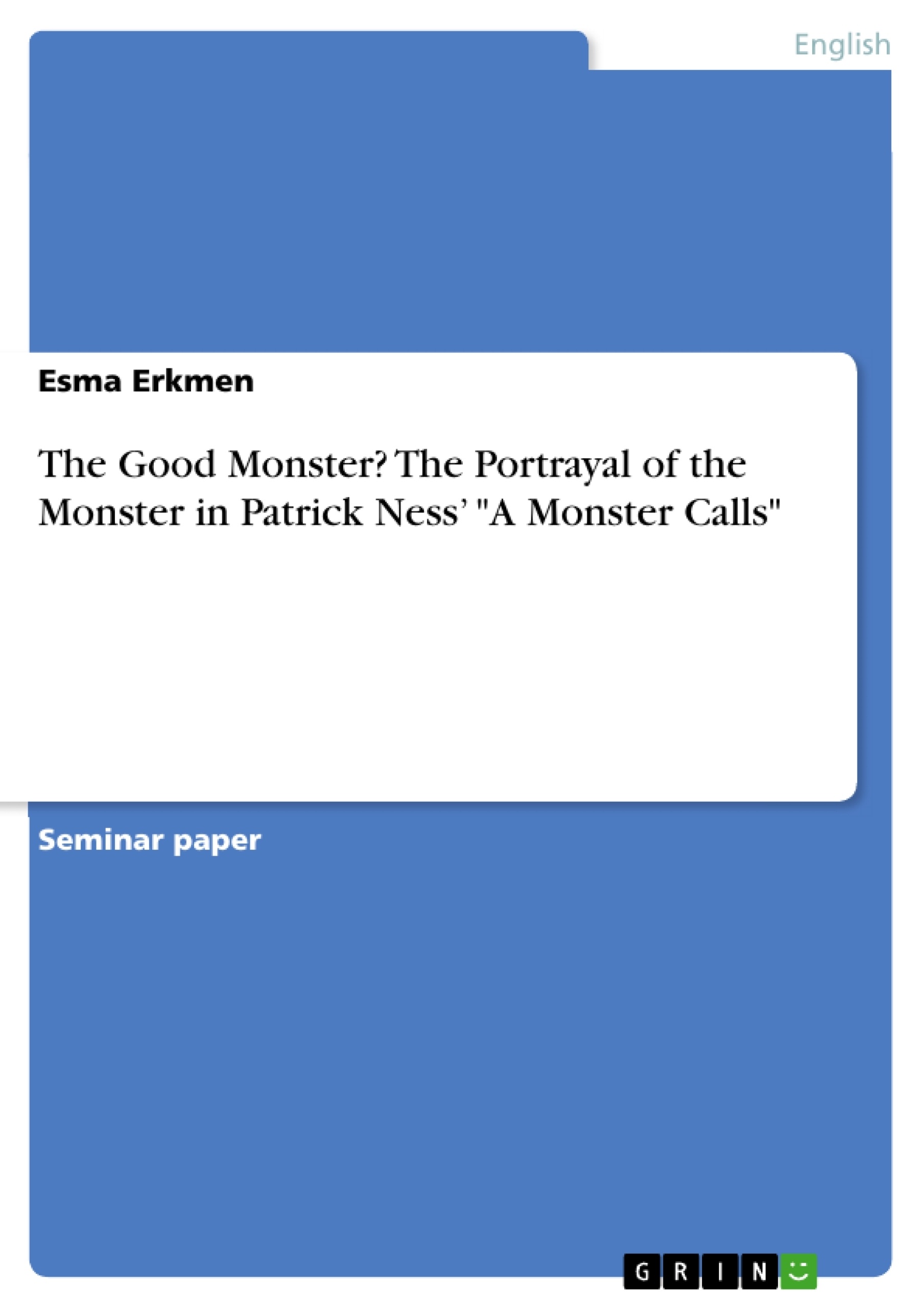In this term paper, I will analyse what the yew tree monster in Patrick Ness’ novel "A Monster Calls" symbolizes and how it is portrayed. In order to examine the role of the monster, I will present some theoretical approaches to the topics of monstrosity and teratology and define what is considered monstrous in the second chapter following this introductory first chapter. In this context, I will take a specific look at the role of monsters in children’s literature and their interaction with child protagonists. Afterwards, in the third chapter, I will analyse in particular the meaning and function of the yew tree monster in the novel "A Monster Calls" by Patrick Ness, published in 2011. Although the creature’s monstrosity is a core element of the story, the monster fulfils a role besides creating plain horror and fear. In addition to that, the last chapter will deal with the role of the illustrations within the novel and their effects. Finally, I will summarize the results of my analysis in a short conclusion about the symbolism and the way of portrayal of the yew tree monster in Ness’ novel.
Table of Contents
- 1 INTRODUCTION
- 2 THEORETICAL APPROACHES TO MONSTERS
- 2.1 The Good Monster
- 2.2 Monsters in Children's Literature
- 3 THE MONSTER IN A MONSTER CALLS
- 3.1 The Illustrations in A Monster Calls
- 4 CONCLUSION
- 5 LIST OF WORKS CITED
Objectives and Key Themes
This term paper aims to analyze the symbolism and portrayal of the yew tree monster in Patrick Ness' novel A Monster Calls. The paper explores theoretical approaches to monstrosity and teratology to define the monstrous and examine its role in children's literature. The analysis focuses on the meaning and function of the yew tree monster in the novel and explores the role of illustrations within the narrative.
- The concept of the monstrous and its portrayal in literature.
- The role of monsters in children's literature.
- The symbolism and function of the yew tree monster in A Monster Calls.
- The impact of illustrations on the narrative.
- The interplay between fear and fascination with the monstrous.
Chapter Summaries
The first chapter introduces the topic of the monster in literature, highlighting the fascination and fear it evokes. It explores the role of the monster as a counterpoint to the protagonist, often embodying a villainous force. The chapter also introduces the concept of the monster as a recognizable and recurring figure in contemporary culture.
The second chapter delves into theoretical approaches to monsters, examining their perception as foreign, unnatural, and monstrous. It explores the negative connotations associated with monsters, including their association with violence and aggression. The chapter also discusses the moral and societal implications of monstrosity and the monster's role in transgressing established norms.
The third chapter focuses on the analysis of the yew tree monster in A Monster Calls, examining its symbolism and function in the narrative. It explores the monster's role beyond creating horror and fear and emphasizes the importance of the illustrations in shaping the reader's understanding of the creature.
Keywords
The main keywords and focus topics of the text are: monstrosity, teratology, children's literature, symbolism, A Monster Calls, Patrick Ness, illustrations, fear, fascination, Otherness, social norms, violence, aggression, moral implications, literary analysis, narrative, portrayal.
- Quote paper
- Esma Erkmen (Author), 2022, The Good Monster? The Portrayal of the Monster in Patrick Ness’ "A Monster Calls", Munich, GRIN Verlag, https://www.hausarbeiten.de/document/1416777


